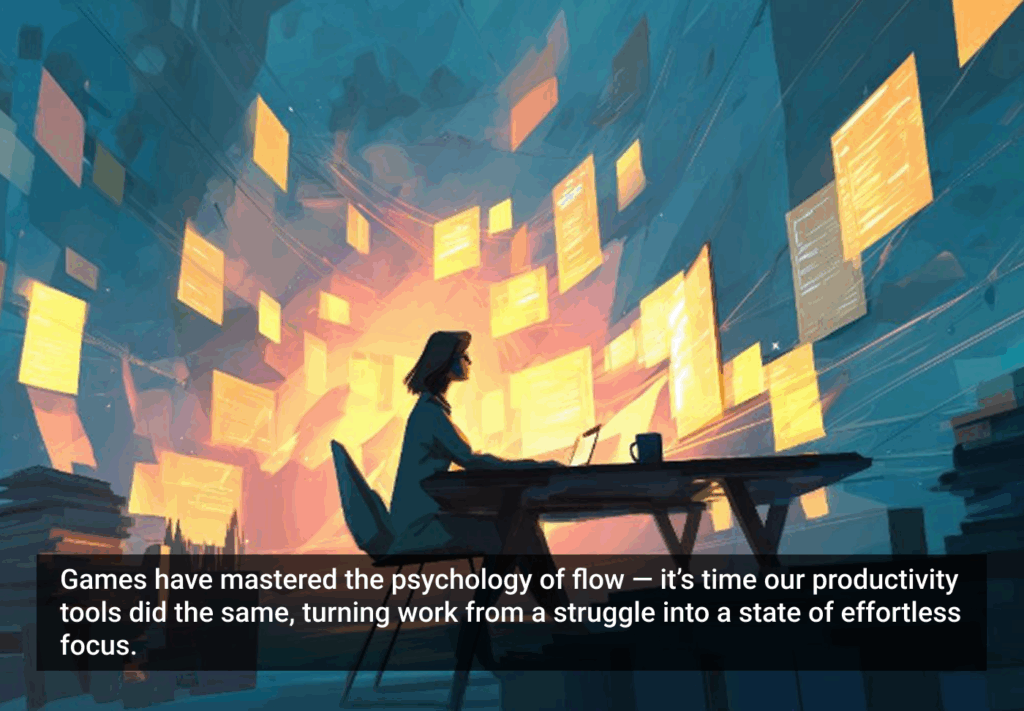- Design Psychology, Design Thinking, Game Design, Human-Centered Design, Psychology, User Experience
What if your productivity app could keep you as focused as your favorite game? This article explores how game design psychology can transform everyday tools into experiences that spark flow, focus, and real engagement.
Article by Montgomery Singman
Flow State Design: Applying Game Psychology to Productivity Apps
- The article shows how principles from game design can help productivity tools create and sustain a flow state.
- It explains that games succeed by balancing challenge and skill, providing clear goals, and offering immediate feedback — elements most productivity apps lack.
- The piece argues that applying these psychological insights could make work tools more engaging, adaptive, and motivating.
Share:Flow State Design: Applying Game Psychology to Productivity Apps
Share this link
- October 21, 2025
12 min read




